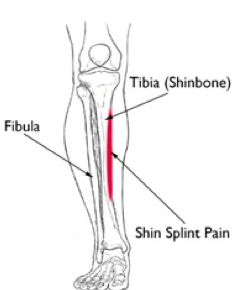References:
AAOS. (2012). Otho Info: Shin Splints, The American Academy of Orthopedic Surgeons (AAOS). Updated: May 2012. Retrieved from: http://orthoinfo.aaos.org/topic.cfm?topic=a00407.
Buchbinder, R. (2004). Plantar fasciitis (Clinical Practice), New England Journal of Medicine, 350:2159-2166.
Galbraith, R. M., & Lavallee, M. E. (2009). Medial tibial stress syndrome: conservative treatment options. Current reviews in musculoskeletal medicine, 2(3), 127-133.
Mayo Clinic Staff. (2016). Plantar fasciitis: Patient Care & Health Information, Mayo Clinic. Retrieved from: http://www.mayoclinic.org/diseases-conditions/plantar-fasciitis/home/ovc-20268392.
Moen, M.H., Tol, J.L., Weir, A., Steunebrink, M., De Winter, T.C. (2009). Medial tibial stress syndrome: A critical review, Sports Medicine, 39(7):523-545.
Schiepsis, A.A., Leach, R.E. Gouyca, J. (1991). Plantar fasciitis: etiology, treatment, surgical results and review of the literature, Clinical Orthopaedics & Related Research, 226.
Thomee, R., Augustsson, J., Karlsson, J. (1999). Patellofemoral Pain Syndrome: A Review of Current Issues, Sports Medicine, 28(4):245-262.
![the[fix]](http://images.squarespace-cdn.com/content/v1/5494e530e4b039edeef75dff/1467052868801-4WDDECP8CV27LAFWPL65/the%5Bfix%5D+logo+TM.jpg?format=300w)



